Find Online Tutors, Courses and Tuition - Create An Account - Free for all! |

When it comes to creating videos, there are a lot of different aspects that need to be considered. In this guide, we'll be covering the basics of video production, from pre-production to post-production. By the end of this article, you'll have everything you need to start making videos!
Video is one of the most popular content formats on the internet today and for good reason. Not only can video be an effective way to communicate your message, but it's also a great way to entertain and engage your audience. In this blog post, we'll be detailing everything you need to know about video production, from pre-production to post-production. Whether you're planning to create a video for your business or just want to improve your video-making skills, read on!
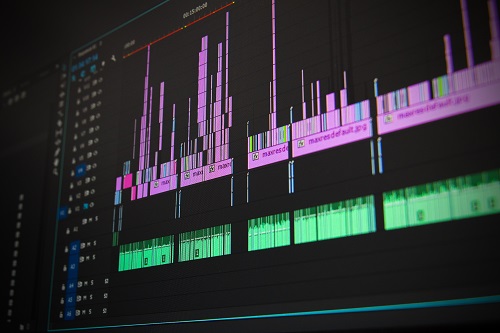
Video production can be a daunting process, but with the right planning and preparation, the process can be smooth sailing. Before production begins, it's important to share your masterpiece with friends and family for feedback. This will help you fine-tune the content and make sure it's of the highest quality. Once all the necessary preparations are made, shoot and edit your video footage! Once the footage is shot and edited, it's time to start thinking about the format and length of the video. Decide on the type of video you want to produce and start planning the filming locations and equipment. It's important to keep in mind the target audience when planning production, as this will help you create a video that is relevant and engaging for them. Last but not least, make sure to post your video on social media for all to see!
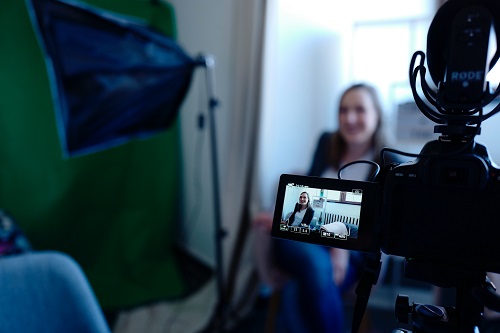
Creating high-quality content marketing videos is an effective way to capture the attention of your target audience and keep them engaged. By planning the sequence of shots and camera angles carefully, you can create videos that are both visually appealing and informative. In addition, it is important to have a clear objective for each video—what do you want people to take away from it? This will help steer your video production in the right direction.
Video marketing is one of the most effective means of communicating with customers and partners. It can also be used to promote your product or service. However, planning and execution are essential for a successful video project. Without them, your video could end up being ineffective or even disastrous. So it's important to have a clear idea of who your target market is before starting production on the video, as well as figure out the objectives you want to achieve with it. Once these things are figured out, filming can commence!
Creating effective content marketing is about more than just putting out good quality video content. You also need to consider the target audience, the type of video you are creating, and the editing process—all of which should be aligned with your company's core message. If you want to create videos that will positively move viewers and compel them to take action, it's important to first identify what type of video format works best for your business and storytelling style. After all this hard work, make sure the video looks great before releasing it into the wild!
Many businesses neglect video content production or marketing in the process of building an online presence. However, video is one of the most effective ways to connect with your target market and create a memorable experience for them. The first step in creating a successful video strategy is defining what you want to achieve. Once that's clear, it's time to test out different formats and see which ones work best for your audience. Next comes the hard part—editing footage together into a cohesive storyboard that flows smoothly from start-to-finish. This takes expertise and planning, so make sure you have everything covered before hitting "record." Sound effects, graphics, and other features also need to be well-crafted if you want viewers to not just watch but also take away something valuable after watching your video.
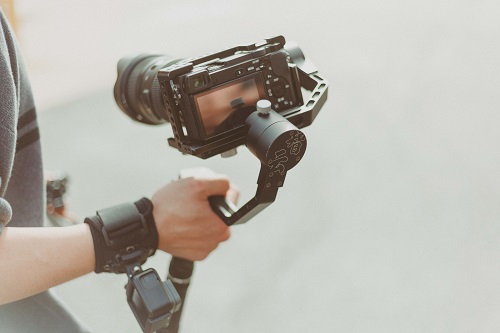
Video production briefs are an important part of effective video marketing. When done correctly, they can help your content reach a wider audience and generate more leads or sales. 1. Shoot in high definition—the pictures will look better this way, and it will project a more professional image! 2. Plan the scene by first understanding your story and then developing the script; this way you'll make sure that everything matches up well on-screen. 3. Make sure to equip yourself with the right equipment—from perfect lighting to sound recording, it's important to have everything prepped before starting filming! 4. Use natural light as much as possible for an enhanced shooting atmosphere—it adds realism and helps create a sense of warmth in footage that is often cold and clinical-looking due to artificial lighting.
Video editing is a process that requires precision and attention to detail. This is why it's important to shoot video footage in well-lit and comfortable conditions with natural light. Once the footage is shot, it should be edited together so that the story unfolds smoothly and it looks professional. To bring out the best in your video content, you need to have a creative approach. Be inspired by what you are filming—this will help make your videos interesting and engaging for viewers.
When it comes to content marketing, the script is just as important as the visuals. A well-written and easy-to-follow document will help engage viewers and keep them interested in what you have to say. In addition, high-quality visuals are a mandatory part of any successful video project—they should complement the content instead of overpowering it! Think about what type of video would be most effective in promoting your product or service; this will help determine the topic of your video. Once you've chosen a subject that's interesting enough, plan the filming schedule with precision so that everything runs smoothly from start to finish. And lastly (but definitely not least), make sure your video is captivating by using engaging footage and sound effects that capture the audience's attention!
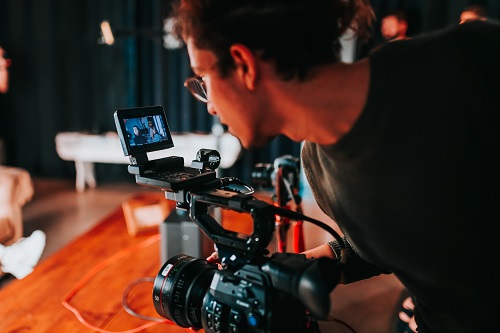
Storyboarding is the process of planning out a video script and making sure it flows smoothly. It helps to create continuity between scenes, ensure that the right emotions are portrayed, and helps with communicating the message of your video in an effective way. Although storyboarding might seem like a tedious process, it is actually one of the most important steps in video production. By taking this step ahead of time, you can save yourself time and trouble during production—which will ultimately result in a better-quality finished product!
When it comes to filmmaking, the location is just as important as the footage itself. To get the most authentic and polished video possible, consider scouting natural and interesting locations to film in. Use props, costumes, set designs, and editing techniques to give your video that extra oomph. Shoot footage in high-definition for an enhanced viewing experience!
Video production is an interesting process that requires good planning and execution. It's important to have a clear vision for the video you want to make, as well as a shot list. Once you know what you are after, it's time to get your hands on the right equipment. Start by experimenting with different camera angles and shots—this will help in achieving a perfect end product. Next, it is essential to find editing software that can help with shaping your footage into something coherent and polished-looking. And, of course, audio recording equipment is necessary for capturing sound effects accurately!

When planning a video shoot, it is important to first decide on the format—will it be an interview, demonstration, or story? Once this decision is made, you need to make a schedule and aim for specific goals. It would also be helpful to have some idea of the location and time off work that everyone involved should take into account-this could become quite hectic! Once all the necessary details have been finalized, the next step would be to select your cast and crew. This includes identifying who will handle filming, sound production, and lighting; making sure everyone is on board with the project's timeline and objectives. Lastly, make sure that everything goes smoothly by prepping in advance (e.g., sending out casting calls well in advance). With careful planning ahead of time—not to mention hard work—shooting a video can definitely result in successful content marketing!
When it comes to video production, the quality of the cast is of utmost importance. As your video will be seen as a representation of your business, it is important that you get the right people on board. Cast talent wisely by shooting on location if possible and choosing those who have the look and skills required for your project. Make sure all aspects of sound and lighting are taken care of before shooting anything; this will give your video production a polished finish. Finally, don't forget to research actors extensively before making any final decisions. This way, you'll avoid any unpleasant surprises down the line!
Video production can be a daunting process, but with the right tools and strategy, it can be easy and rewarding. The first step is to decide what you want to achieve with your video. Once you have a clear idea of the goal, shoot footage of all the segments required (e.g., introduction, main scene/info, closing scene) and edit them together according to your outline using software like Adobe Premiere Pro or Final Cut Pro X. Come up with an outline for the video, including who will be talking, what they'll say, and where the scenes will take place. Once you have the basics down, it's time to choose a genre or topic that interests you and research similar videos in that genre or topic. This will help you to structure your video in a way that is both effective and unique.
To make your video footage stand out and be more engaging to watch, it is important to use sound effects and music that will work together. Additionally, you'll need a camera and a microphone to start filming. Once the video footage is shot, it's time to edit it properly. Make sure all the lighting is perfect—no one should look uncomfortable or unnatural on-camera! And last but not least, don't forget the final step of making your video look professional; editing can make all the difference between an amateur-looking clip and something that looks polished and high-quality.
To create the perfect video content, it is important to set up the camera correctly. Here are a few tips that will help you shoot footage that looks and feels cinematic: Add music and sound effects to really immerse your viewer in your story. This can easily be done by editing audio files after footage has been shot or adding voice-overs later on. Use natural light whenever possible to achieve that cinematic look. Shoot outdoors when possible for a more scenic feel, or use artificial lighting if necessary. Avoid using fluorescent lamps as they give video clips a yellow tinge. - Shoot in 1080p or higher resolution for the best quality output. This will provide clearer images with less distortion, making your videos look sharper overall. And of course, always use a tripod to reduce camera shake and ensure better footage!
When shooting video footage for your marketing content, it is important to plan the shoot carefully. Follow a set schedule and stick to it. This way, you can ensure that the footage looks professional and captures the right tone of your content. Selecting the right location is just as important as choosing the right equipment. Make sure the space is well-lit and free from distractions so that your audience can clearly see what's happening onscreen. Finally, make sure all the audio-visual equipment you use complies with industry standards so sound quality won't be an issue in the post-production editing process.
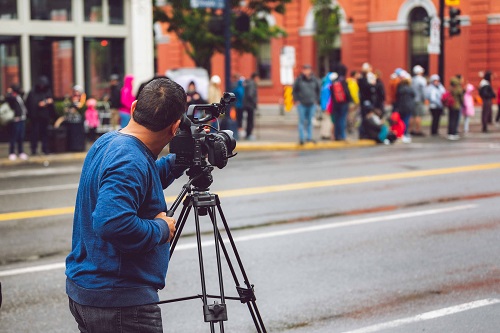
To create a video that will be both effective and engaging, you'll need footage of the story at hand. This can be achieved by shooting B-roll footage a video of important scenes or moments that doesn't feature the main characters. B-roll footage is used to add context and emotion to your video, helping it to feel more real. Shoot in natural settings with short shots so the audience won’t get bored (or distracted). Add sound effects and background music for an extra layer of immersion. Remember: keep things brief so viewers don’t lose interest!
Creating a video is a great way to capture memories, tell stories, and communicate your ideas. However, it can be a daunting process. That's why we've put together this comprehensive guide on video production. In it, you'll learn about the different stages of video production and the tools and software you'll need to make the process easy and efficient. You'll also learn the importance of post-production and the steps you need to take to create a polished final product. With this guide at your disposal, video production will be a breeze!
There are many factors to consider when editing your video for marketing purposes. Make sure that the content is well-edited and flows smoothly from start to finish. Additionally, remember to share your video on different social media platforms for the maximum exposure it can get! You could use special software programs or simply edit using a video editing program you are familiar with. The most important part of editing is story-telling; make sure that your footage captivates and engages viewers from beginning to end. Add some catchy music and sound effects, and you're all set!
To successfully record a voiceover, it is important to have the right equipment and software. You will also need editing software to add effects and music, as well as video production skills. Make sure you take your time while recording—mistakes can be easily corrected in post-production. Once your video is edited and the sound quality is satisfactory, it's time to upload it online for everyone to see! By following these simple steps, you'll be on your way to successful voiceover marketing.
Video marketing is a great way to connect with your target audience and show them the product or service you are offering in an entertaining way. By using graphics, text, and special effects, you can create videos that really stand out from the pack. Moreover, video editing software like Adobe Premiere or Final Cut Pro will be essential for creating high-quality videos that will wow your viewers! Make sure to use good-quality cameras so the footage isn't blurry or jittery. And last but not least, make sure the video content is clear and easy on the eyes-no motion blur, please!
Colouring is one of the most popular activities among kids these days. So, it makes sense that video content featuring colouring would be a hit with viewers. By taking the right steps while developing and producing your video, you can make sure that it looks great on all devices and platforms. Here are some tips to help you out: Use colour wisely. Make sure each colour has its own purpose in order to create an effective visual storyboard. Titles, subtitles, and special features are key. Make sure everything helps people understand what they're watching without having to read too much or pause the video regularly. The graphics, sound effects, and music work together. These three elements should be used in a complementary way so as not to distract from the main message of your video.
Adding music to your video can really help to set the tone and mood of the content. It can make it more engaging, interesting, and even funny! There are a number of free music platforms you can use—like Soundcloud or YouTube Music, so getting started is easy. Just search for the type of music you want and add it to your video. Be sure to choose the right track for the right moment! If you want things to be even more engaging, try editing in some background audio effects that will give your video an extra boost.
See part two
